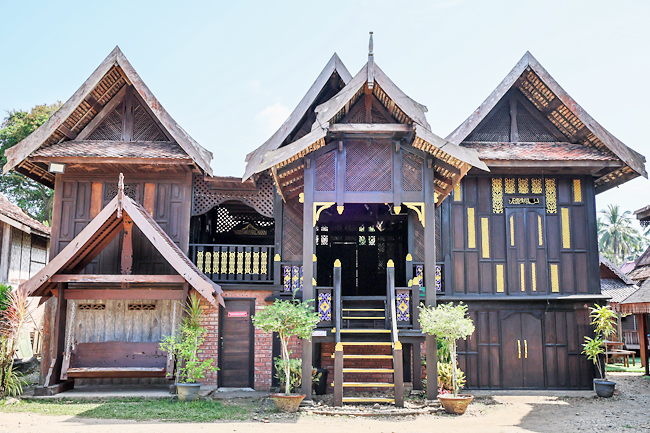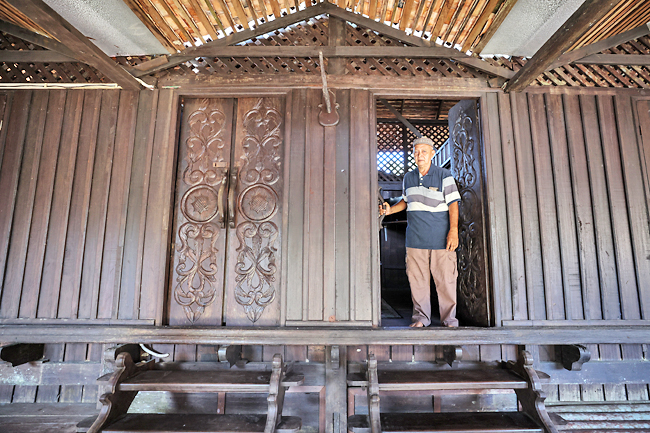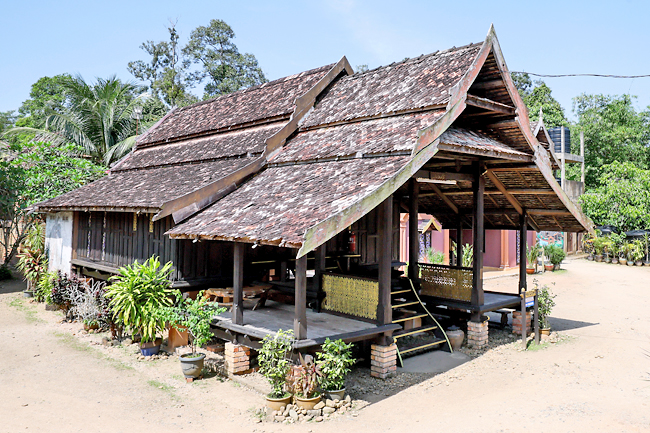BERNAMA – About 20 years ago, his family members and friends considered him crazy for wanting to build a resort featuring accommodations inspired by the traditional Malay houses of Terengganu, Malaysia.
However, driven by his love for his state’s heritage architecture, Tun Ahmad Tun Abdullah, 65, turned a deaf ear and continued to pursue his dream.
In 2004, Tun Ahmad, affectionately known as Pak Tun, embarked on his labour of love.
Utilising an area of about one hectare, he built one house after another until he successfully erected a total of eight units, each showcasing the unique characteristics of traditional Malay homes.
Finally, in 2010, Resort Warisan Pahlawan was ready to take in guests. The majestic-looking “heritage settlement” is located in Kampung Pauh, Jenagor, Hulu Terengganu, about an hour’s drive from Kuala Terengganu.
“Each house is named after a renowned Malay warrior, independence fighter or famous scholar of Terengganu, such as Mat Kilau, Tok Gajah and Tok Pulau Manis,” Tun Ahmad told Bernama.
CHENGAL WOOD, NO NAILS USED
Elaborating on the resort’s accommodations, he said the houses were built without nails – just like how it was done in the old days – using the wedge and mortise method and only chengal wood, known for its durability.
“I started this endeavour 20 years ago by searching for abandoned traditional houses across Terengganu to obtain chengal wood which was the cornerstone of most old houses. I bought these houses, dismantled them to collect the wood, and then brought it to the construction site in Kampong Pauh,” he said.



The special quality of chengal wood is its longevity. It is also termite-resistant and strong, yet at the same time soft, making it easy to carve, he explained.
To ensure the authenticity of the houses he was building, he also acquired ‘singgora’ or terracotta roof tiles.
“When the first house was completed, it unexpectedly attracted a lot of interest from the public. I named the house Rumah Tok Pauh (after a scholar),” he said.
During his search for old dwellings in Terengganu, Tun Ahmad stumbled upon the “skeleton” of an old abode. According to the locals, this house was once inhabited by Mat Kilau, a renowned Malay warrior from Pahang who fought against British colonialists.
Located in Pasir Nering, the old-timers residing nearby said Mat Kilau lived in this house for a long period after arriving from Ulu Tembeling, Pahang.
“I bought the remnants of the house from the owner’s grandson. I told him this house has historical significance.
If left neglected, it will eventually collapse and its story will be lost,” he said.
Using the materials salvaged from the crumbling structure, Tun Ahmad managed to erect a traditional house and aptly named it Rumah Mat Kilau.
RETAIN TRADITIONAL CHARACTERISTICS
Tun Ahmad said each house in his resort is constructed according to traditional Terengganu house types such as ‘Rumah Bujang Berselasar’, ‘Rumah Bujang Berkembar’ and ‘Rumah Tele’.
“Our Rumah Mat Kilau was designed with the features of ‘Rumah Bujang Berselasar’ or ‘Berserambi’. (Two other units in the resort) Rumah Tok Gajah is based on the characteristics of Rumah Bujang Berkembar and Rumah Tok Pulau Manis highlights the characteristics of ‘Rumah Tele’,” he said.
However, out of the eight houses in the resort, only Rumah Mat Kilau, Rumah Tok Gajah and Rumah Tok Pauh fully retain the traditional house concept of the old days with the bathroom situated outdoors and without modern amenities like air conditioning.
“As for the other houses (in the resort), only their exteriors feature olden-day architectural elements. Inside, they are equipped with modern amenities to meet the needs of our guests,” he said, adding their guests, however, prefer staying in the fully traditional houses.
Meanwhile, shedding more light on the architecture of Terengganu’s old Malay houses, former director of the Terengganu State Museum Datuk Mohd Yusof Abdullah said both ‘Rumah Bujang Berselasar’ or ‘Berserambi’ and ‘Rumah Bujang Berkembar’ are types of ‘Rumah Bujang Berpeleh’.
The ‘Rumah Bujang Berpeleh’ features a long roof with panels at both ends resembling an inverted v. Mohd Yusof told Bernama it is known as ‘Rumah Bujang Berkembar’ when two units of ‘Rumah Bujang Berpeleh’ are joined together to form a single house, making the roof’s panels look like an inverted ‘W’.
And, it becomes ‘Rumah Bujang Berserambi’ when a veranda is added to the left or right side of ‘Rumah Bujang Berpeleh’.
‘Rumah Tele’, on the other hand, is another type of traditional Malay home that can be distinguished by its central space, which sets it apart from other house types.
“However, in terms of architecture, it resembles ‘Rumah Bujang Berpeleh’,” Mohd Yusof said.
‘Rumah Tele’ also refers to a building or abode located at the back of a palace, which is designated for women.
According to the Terengganu State Museum website, ‘Rumah Tele’ was built in early 1888 by Sultan Zainal Abidin III in the vicinity of the Maziah Palace.
SKILLED WORKMEN
Tun Ahmad, meanwhile, said the houses in his resort were built using the expertise of local craftsmen who were assisted by foreign workers. They handled everything, from the basic construction to the wood carvings that adorn both the interior and exterior of the houses.
“The carvings featuring motifs of floral designs and Al-Quran verses are crafted in the same style as those from long ago. We also created our own furniture to maintain the authenticity of the traditional houses,” he said. – Muhammad Faizal Nazmi Mohd Haran



